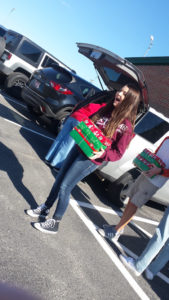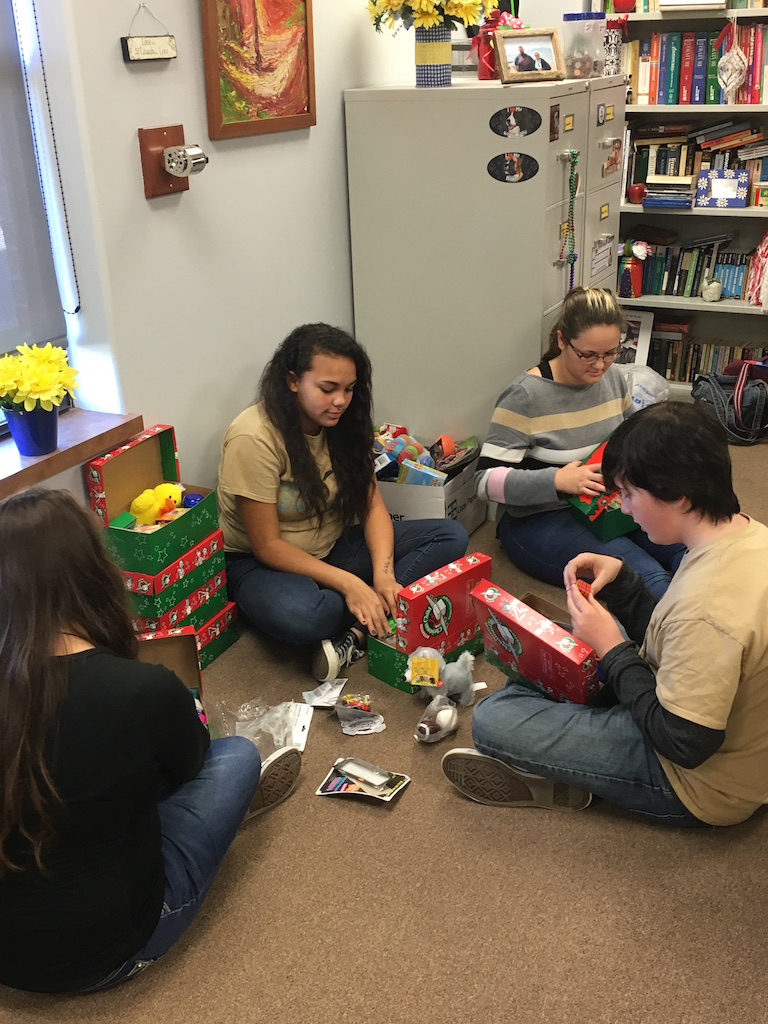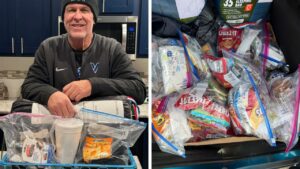Lorrie Quinnelly, 8th-grade teacher at Kiefer Jr. High, as an annual tradition with her students that is really something to admire. Each year she presents her students with three or four different projects they could get involved during the holiday season, and they collectively choose one.
“I believe that teaching students to be responsible and caring citizens of their community and their world is as important as the academic concepts I teach,” she says.
The first year, they adopted two children from a Salvation Army Christmas tree. The last four classes have chosen Operation Christmas Child, an arm of Franklin Graham’s organization, Samaritan’s Purse. The idea is to fill shoeboxes with items a child in a third-world country or an American child who is less fortunate than most of my students could use or would like for Christmas.
“I believe that teaching students to be responsible and caring citizens of their community and their world is as important as the academic concepts I teach.”—Lorrie Quinnelly, 8th-Grade Teacher at Kiefer, OK

The students then visit places where they can purchase inexpensive items and new toys, school supplies, or personal hygiene items that will fit in a shoebox. “We collect crayons and coloring books, pencils, paper, Hot Wheel cars, stuffed animals, T-shirts, hats, yo-yos, pajamas, dolls, PlayDoh, suckers and candy, soap and washcloths, toothbrushes and toothpaste,” Quinnelly said. “It’s amazing how much you can fit in a shoebox when you have to, and the students do all the packing themselves.”
Students still have to be wary though—The organization prohibits liquids or anything tied to military operations. That means no toy guns, toy weaponry, or toy soldiers—which are toys that boys here in the US can find in abundance. Candy has to be individually wrapped and sacked in a ziploc bag.
Even students who don’t like to shop—or don’t have the time—can still get involved. “Some students, particularly athletes who time is limited, contribute money,” Quinnelly said. Their friends or Quinnelly herself will then shop for them and pick up shoebox items.
The experience continues as the box gets shipped out and can be tracked to see where it ends up Quinnelly said that each year she sees the project have a profound effect on her students.
She also says that by that time they will usually see students who are not very fortunate to begin with sacrifice something of themselves for someone else. They’ll contribute their lunch money and bring their lunch that day instead, or they’ll bring things they bought with their birthday money, rather than buy something for themselves.
At this point, the project this year has come to an end and all 8 boxes—usually equalling somewhere between $250-$300 plus shipping—are off around to the world to kids that need them more. After 4 years of these projects are leaving lasting effects on Quinnelly’s students.
“Every year we do this, I see my students develop a deeper compassion for people who are less fortunate than they are,” she says. “They begin to learn that the world does not revolve around them.”
That’s a lesson we all need from time to time, regardless of our age.
—
Featured Image: Kiefer Junior High School 8th graders stuff shoeboxes with toys, school supplies, and hygiene items as part of Operation Christmas Child. Pictured are, from left, Lexis Nolen, Bianca Worley, Kalyn Venable, and Dylan Bloodworth-Carr.







